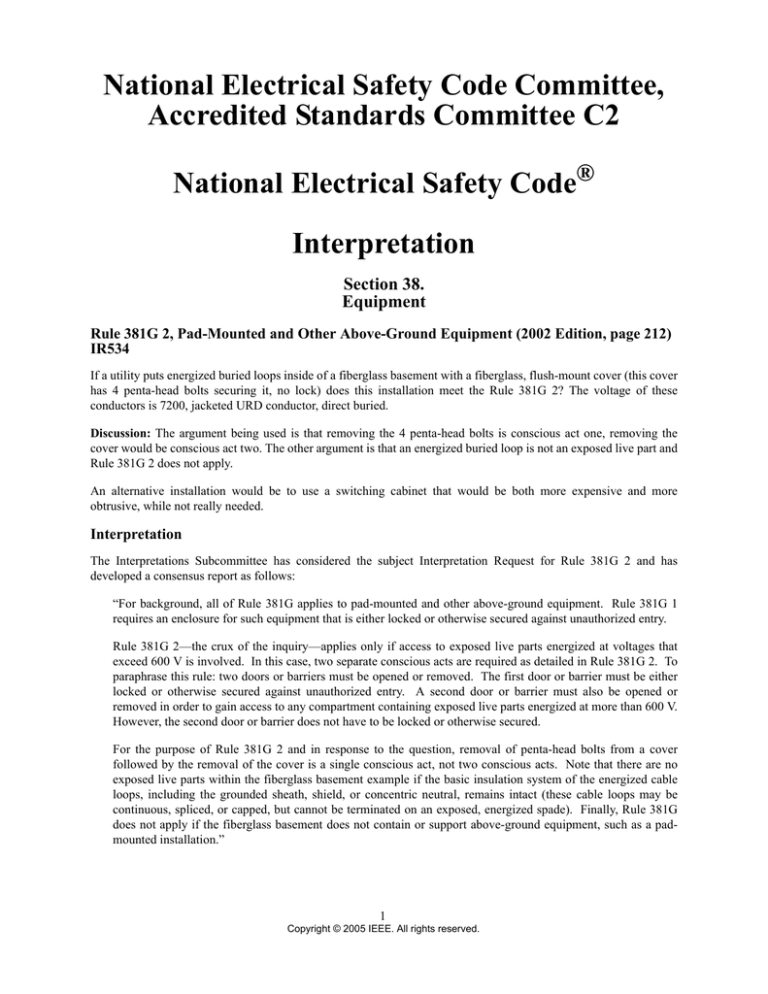
National Electrical Safety Code Committee,
Accredited Standards Committee C2
National Electrical Safety Code®
Interpretation
Section 38.
Equipment
Rule 381G 2, Pad-Mounted and Other Above-Ground Equipment (2002 Edition, page 212)
IR534
If a utility puts energized buried loops inside of a fiberglass basement with a fiberglass, flush-mount cover (this cover
has 4 penta-head bolts securing it, no lock) does this installation meet the Rule 381G 2? The voltage of these
conductors is 7200, jacketed URD conductor, direct buried.
Discussion: The argument being used is that removing the 4 penta-head bolts is conscious act one, removing the
cover would be conscious act two. The other argument is that an energized buried loop is not an exposed live part and
Rule 381G 2 does not apply.
An alternative installation would be to use a switching cabinet that would be both more expensive and more
obtrusive, while not really needed.
Interpretation
The Interpretations Subcommittee has considered the subject Interpretation Request for Rule 381G 2 and has
developed a consensus report as follows:
“For background, all of Rule 381G applies to pad-mounted and other above-ground equipment. Rule 381G 1
requires an enclosure for such equipment that is either locked or otherwise secured against unauthorized entry.
Rule 381G 2—the crux of the inquiry—applies only if access to exposed live parts energized at voltages that
exceed 600 V is involved. In this case, two separate conscious acts are required as detailed in Rule 381G 2. To
paraphrase this rule: two doors or barriers must be opened or removed. The first door or barrier must be either
locked or otherwise secured against unauthorized entry. A second door or barrier must also be opened or
removed in order to gain access to any compartment containing exposed live parts energized at more than 600 V.
However, the second door or barrier does not have to be locked or otherwise secured.
For the purpose of Rule 381G 2 and in response to the question, removal of penta-head bolts from a cover
followed by the removal of the cover is a single conscious act, not two conscious acts. Note that there are no
exposed live parts within the fiberglass basement example if the basic insulation system of the energized cable
loops, including the grounded sheath, shield, or concentric neutral, remains intact (these cable loops may be
continuous, spliced, or capped, but cannot be terminated on an exposed, energized spade). Finally, Rule 381G
does not apply if the fiberglass basement does not contain or support above-ground equipment, such as a padmounted installation.”
1
Copyright © 2005 IEEE. All rights reserved.

